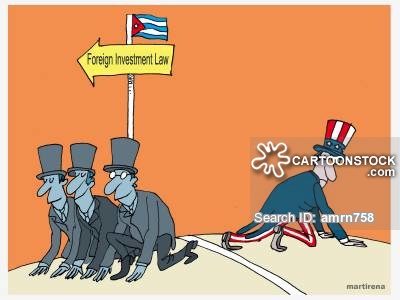Contents:


Where there is a linear relationship between two variables there is said to be a correlation between them. Examples are height and weight in children, or socio-economic class and mortality. In brief, any reading between zero and -1 signifies that the two securities transfer in opposite instructions. However, the diploma to which two securities are negatively correlated would possibly differ over time and are almost never precisely correlated, on a regular basis.
A data-driven approach to quantify disparities in power outages … – Nature.com
A data-driven approach to quantify disparities in power outages ….
Posted: Thu, 04 May 2023 10:44:30 GMT [source]
A optimistic correlation, when the correlation coefficient is greater than zero, signifies that each variables transfer in the same path or are correlated. To calculate correlation, one should first determine thecovarianceof the two variables in query. The polychoric correlation coefficient measures affiliation between two ordered-categorical variables. When each variables are dichotomous instead of ordered-categorical, the polychoric correlation coefficient is known as the tetrachoric correlation coefficient. Pearson coefficient is a kind of correlation coefficient that represents the relationship between two variables that are measured on the identical interval.
FAQs on Karl Pearson’s Coefficient of Correlation
When the r worth is closer to +1 or -1, it indicates that there’s a stronger linear relationship between the two variables. A correlation of -0.97 is a powerful unfavorable correlation whereas a correlation of 0.10 could be a weak positive correlation. R-squared is a statistical measure that represents the proportion of the variance for a dependent variable that is defined by an impartial variable or variables in a regression mannequin. So, if the R2of a model is zero.50, then approximately half of the noticed variation may be explained by the model’s inputs. In some situations, the bootstrap can be utilized to assemble confidence intervals, and permutation checks may be applied to hold out speculation tests. These non-parametric approaches could give extra significant leads to some situations where bivariate normality doesn’t maintain.
A unfavorable correlationoccurs when the correlation coefficient is less than 0 and signifies that each variables transfer in the opposite direction. The correlation coefficient r is given as the ratio of covariance of the variables X and Y to the product of the standard deviation of X and Y. To investigate whether there is any relation between the variables X and Y we use scatter diagram. If the variables X and Y are plotted along the X-axis and Y-axis respectively in the x-y plane of a graph sheet the resultant diagram of dots is known as scatter diagram.
FOMC Report sparks different reactions in crypto and stock markets – AMBCrypto News
FOMC Report sparks different reactions in crypto and stock markets.
Posted: Fri, 05 May 2023 01:32:42 GMT [source]
• It is used to measure how strong a relationship is between two variables. • The absolute value of the correlation coefficient gives us the relationship strength. Complete correlation between two variables is expressed by either + 1 or -1. When one variable increases as the opposite increases the correlation is constructive; when one decreases as the other increases it is adverse. Figure 11.1 offers some graphical representations of correlation.
When only 2 variables are involved the correlation is known as simple correlation and when more than 2 variables are involved the correlation is known as multiple correlation. When the variables move in the same direction, these variables are said to be correlated positively and if they move in the opposite direction they are said to be negatively correlated. The positive value of Pearson’s correlation coefficient implies that if we change either of these variables, there will be a positive effect on the other. For example, if we increase the age there will be an increase in the income. The correlation coefficient indicates the extent to which the pairs of numbers for these two variables lie on a straight line. Values over zero point out a positive correlation, whereas values underneath zero indicate a unfavorable correlation.
Is correlation coefficient r2 or R?
A correlation coefficient is a pure number independent of the unit of measurement. If it is positive but close to zero, then there will be a weak positive correlation and if is close to +1, then there will be a strong positive correlation. The correlation coefficient is not affected by change of origin or scale or both.
Like many generally used statistics, the pattern statistic r isn’t robust, so its value may be deceptive if outliers are current. Specifically, the PMCC is neither distributionally sturdy, nor outlier resistant (see Robust statistics#Definition). Correlation is a statistical measure that helps in determining the extent of the relationship between two or more variables or factors.
Transfer and transformation characteristics of Zn and Cd in soil … – Nature.com
Transfer and transformation characteristics of Zn and Cd in soil ….
Posted: Sat, 06 May 2023 09:45:00 GMT [source]
It is a statistic that measures the linear correlation between two variables. Like all correlations, it also has a numerical value that lies between -1.0 and +1.0. When the value of the correlation coefficient is exactly 1.0, it is said to be a perfect positive correlation.
How to interpret results from the correlation test?
The Karl Pearson coefficient is defined as a linear correlation that falls in the numeric range of -1 to +1. Correlation refers to the process of establishing a relationship between two variables. To identify or to understand whether a relationship exists between two variables or not, you plot the points on a scatter plot.
- The Karl Pearson coefficient can be obtained using various methods, which are mentioned below.
- If the connection is understood to be nonlinear, or the noticed sample appears to be nonlinear, then the correlation coefficient is not helpful, or a minimum of questionable.
- The measures of the degree of relationship between two continuous variables is called correlation coefficient.
- Like many generally used statistics, the pattern statistic r isn’t robust, so its value may be deceptive if outliers are current.
- Calculate deviations of values of x series from the mean value.
- The most commonly used formula to find the linear dependency of two sets of data is Pearson’s Correlation Coefficient Formula.
We see that the Karl Pearson Coefficient Correlation is used extensively in mathematical procedures. In the calculation of any economic problem, this gains great vitality by estimating the variables for X and Y and thereby sorting to find the intensity between them. Outliers are data that contrasts drastically with the rest of the data. It might signify many extreme data which actually does not fit in the set. You can spot an outlier by plotting the data in a graph paper and looking for any extreme study. When we calculate the Karl Pearson Correlation, we are required to make a few assumptions in mind.
Covariance is a measure of how two variables change together, however its magnitude is unbounded, so it’s tough to interpret. By dividing covariance by the product of the two commonplace deviations, one can calculate the normalized model of the statistic. The vary of values for the correlation coefficient is -1.0 to 1.zero. 0.01Studies on social sciences or any study involving primary data to check respondents’ opinions/ perspectives.95%Allowing only a 5% chance of error in the result. Therefore, the Significance (2-tailed) value to look for in all variables should be less than 0.05.
Next, see if the Significance (2-tailed) value for all the independent variables is less than 0.05 or not. The correlation coefficient requires that the underlying relationship between the 2 variables into account is linear. If the connection is understood to be nonlinear, or the noticed sample appears to be nonlinear, then the correlation coefficient is not helpful, or a minimum of questionable. A correlation is a statistical measurement of the connection between two variables.
It is also a study of methodologies to gather, review, and analyze the given set of data and draw a conclusion. There are some theories and sets of formulae that have been given in statistics. The”Pearson correlation coefficient”, Pearson’s r, is used if the values are sampled from “normal” populations. Coefficient of correlation is “R” value which is given in the summary table in the Regression output. In other words Coefficient of Determination is the square of Coefficeint of Correlation.
The bootstrap can be used to assemble confidence intervals for Pearson’s correlation coefficient. The correlation coefficient is decided by dividing the covariance by the product of the two variables’ normal deviations. A correlation or easy linear regression evaluation can determine if two numeric variables are significantly linearly related.
Pearson’s Correlation Coefficient ®
For instance, an increase in height has no impact on one’s intelligence. This is a quantitative method that offers the numeric value to form the intensity of the linear relationship between the X and Y variable. Let, us find and delve into this topic to get more detailed information on the subject matter – Karl Pearson Coefficient of Correlation. The number of years of education received and The age of entering the workforce will give us the years of formal education one has received.
However, make sure to be thorough with all the formulas of the Karl Pearson coefficient of correlation, so that you can attempt them in your exams with greater confidence. The Karl Pearson correlation coefficient method is quantitative and offers numerical value to establish the intensity of the linear relationship between X and Y. For example, a change in the monthly income of a person leads to a change in their monthly expenditure . With the help of correlation, you can measure the degree up to which such a change can impact the other variables. The study of Karl Pearson Coefficient is an inevitable part of Statistics. Statistics is majorly dependent on Karl Pearson Coefficient Correlation method.
• Investors can use negatively invested correlated assets to hedge their portfolios and decrease market risk due to volatility or large price fluctuations. • Correlation statistics allows investors to determine when the correlation between two variables changes. • Correlation coefficient finds its use in areas such as quantitative trading, performance evaluation and portfolio composition. Suppose we have two continuous variables X and Y and if the change in X affects Y, the variables are said to be correlated. In other words, the systematic relationship between the variables is termed as correlation.
The numerator may be positive or negative making r to be either positive or negative. Correlation between two variables is said to be perfect if the value of r is either +1 or -1. R with a positive value signifies that both X and Y move along the same direction. Where the author shows the graph, you can get a good idea from the scatter as to how strong the relationship is without needing to know the r value.
Sometimes correlation is computed just for 8 pairs of observation, in which case table ‘t’ value at 5 percent level is 2.45. Unless calculated ‘t’ value is above 2.45, then correlation is not significant. It is therefore crucial to have a large number of observations in order to obtain statistically reliable estimates.
This process is repeated a lot of instances, and the empirical distribution of the resampled r values are used to approximate the sampling distribution of the statistic. A 95% confidence interval for ρ may be outlined because the interval spanning from the two.fifth to the 97.fifth percentile of the resampled r values. Steps involved in the procedure of calculation of Karl Pearson’s coefficient of correlation by the direct method.
We are a team of dedicated analysts that have competent experience in how to interpret correlation coefficient modelling, statistical tests, hypothesis testing, predictive analysis and interpretation. Value for 1st cell for Pearson coefficient will always be 1 because it represents the relationship between the same variable . For subsequent variables Pearson’s coefficient value will be vary from -1 to 1. The presence of a relationship between two factors is primarily determined by this value. Save taxes with ClearTax by investing in tax saving mutual funds online. Our experts suggest the best funds and you can get high returns by investing directly or through SIP.

The correlation coefficient is determined by dividing the covariance by the product of the two variables’ standard deviations. Karl Pearson’s Correlation Coefficient is used in statistics to summarize the strength of the linear relationship between two data samples. Pearson’s correlation is also called Pearson’s R. It is commonly used in linear regression. The Pearson correlation coefficient can be used to summarize the strength of the linear relationship between two data samples.
We can determine the strength of the relationship between two variables by finding the absolute value of the correlation coefficient. Anytime the correlation coefficient, denoted as r, is bigger than zero, it’s a positive relationship. Conversely, anytime the worth is less than zero, it is a unfavorable relationship. A value of zero indicates that there isn’t any relationship between the two variables. The correlation coefficient often expressed as r, signifies a measure of the course and strength of a relationship between two variables.

Leave a Reply